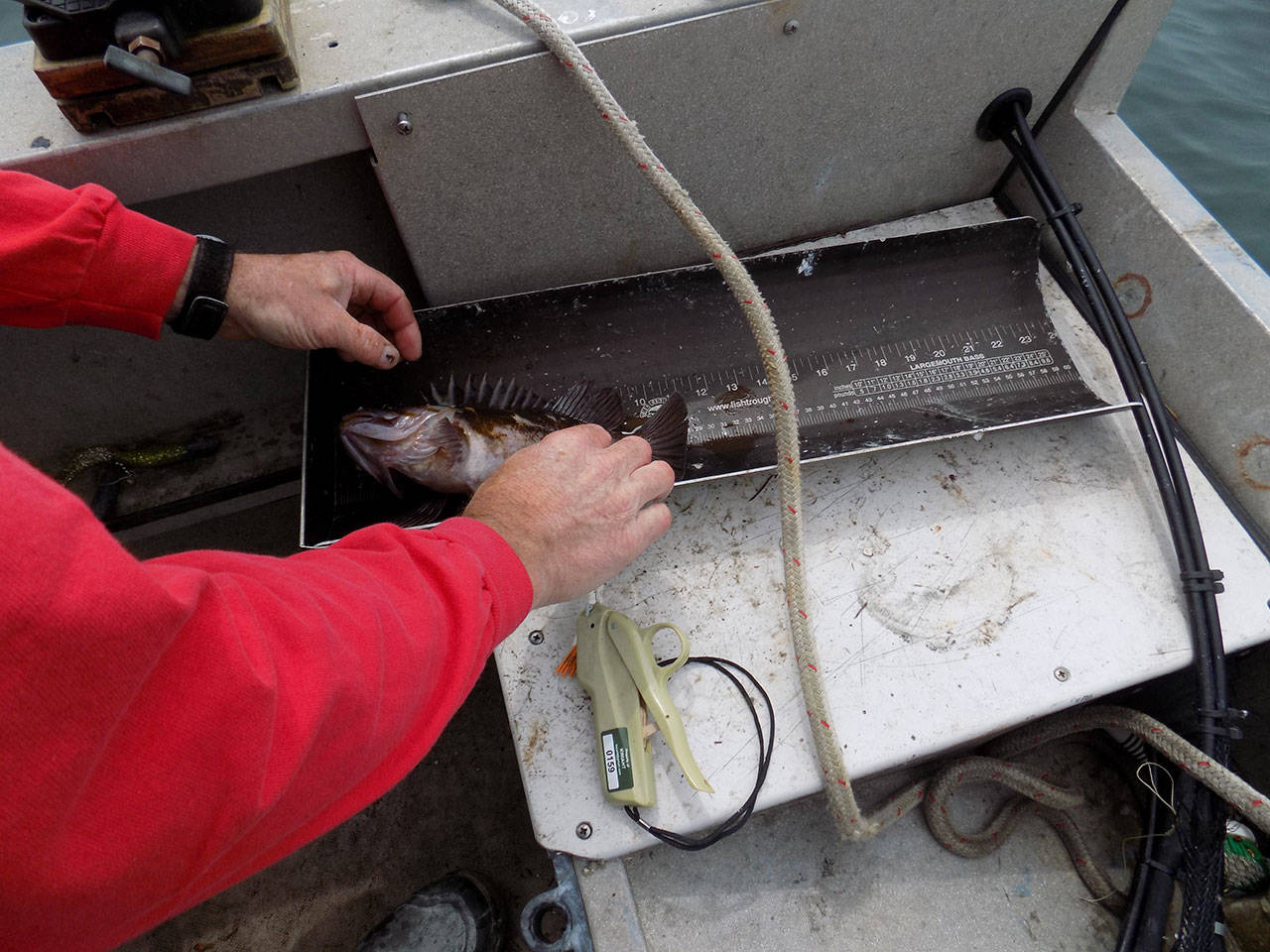Submitted by Kwiaht
Sport fishers are helping local scientists track the movements and estimate numbers of copper rockfish in the San Juan Islands by reporting the size and location of tagged fish hooked and released as bycatch of the lingcod fishery.
Like lingcod, copper rockfish rest on submerged ridges, boulders and pinnacles waiting for passing prey, and will often take the same lures. Although rockfish must be released, useful information can be collected about them during the minute or two that they are in hand before being returned to the water. “
“Sport anglers are on the front line of research on the species they target as well as species routinely encountered as bycatch,” says Russel Barsh of Kwiaht, who is coordinating the island copper rockfish study.
Kwiaht marine researchers “catch dinner on idle time” on their state recreational fishing permits, tagging and releasing any copper rockfish they bring to hand incidentally. Plastic T-bar tags can be attached to a fin in seconds with a tiny punch hole “like an earring.” With their small size and orange color, tags are unlikely to affect the behavior or survival of tagged rockfish. Tags are inexpensive and durable “but tagging only works if a very large number of fish are tagged and everyone reports tagged fish when they see them.” Nearly a hundred coppers have been tagged thus far.
Look for a small bright orange tubular tag in the anterior dorsal fin. If you find one, copy down its number and measure the length of the fish in inches before you release it. Then leave a message at 468-2808 or by emailing kwiaht@gmail.com with the tag number, length of the fish, and where you caught it. Kwiaht researchers will get back to you with information on where and when your rockfish was originally tagged.
Copper rockfish give live birth. Unlike lingcod and greenlings, they do not establish and defend nests, leaving them free to congregate or migrate seasonally around the islands to take advantage of preferred prey such as prawns and shrimp. Juvenile coppers spend about five years in shallow bays before moving into deeper waters as reproductive adults. Exactly how and when copper rockfish move and mate in the islands remains a mystery. Rockfish as a whole are known to mate rarely and when they do, engage in elaborate courtship rituals like those of birds. They may encounter potential mates randomly, or during seasonal aggregations, or search for them at particular locations or depths. The behavior seems more important than physical appearance, but the behavior of most rockfish species remains unknown.
“This is a labor of love for Kwiaht staff,” says Barsh. “It’s not grant-funded; we just love to fish and we want to learn as much as possible from every fish we catch.”




